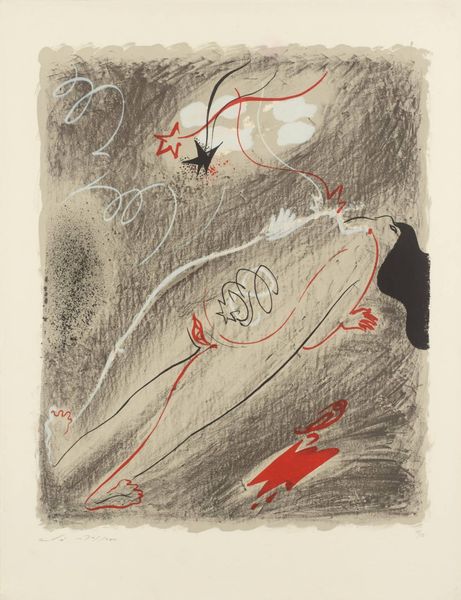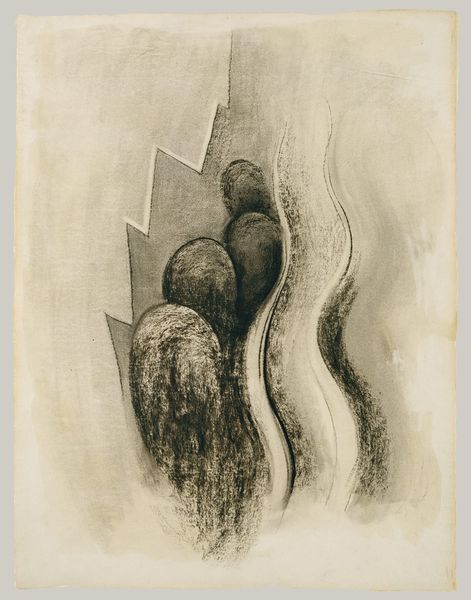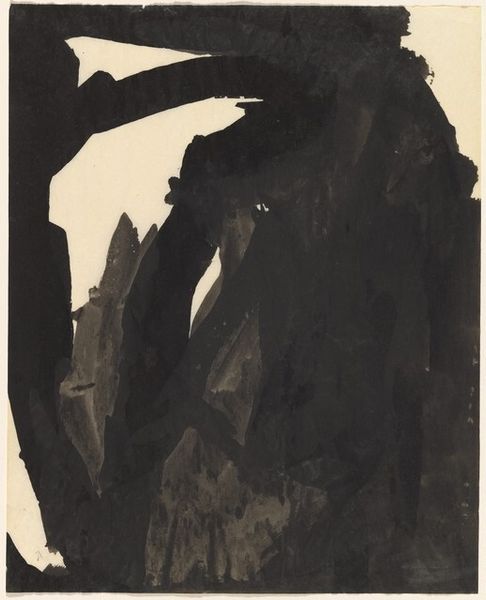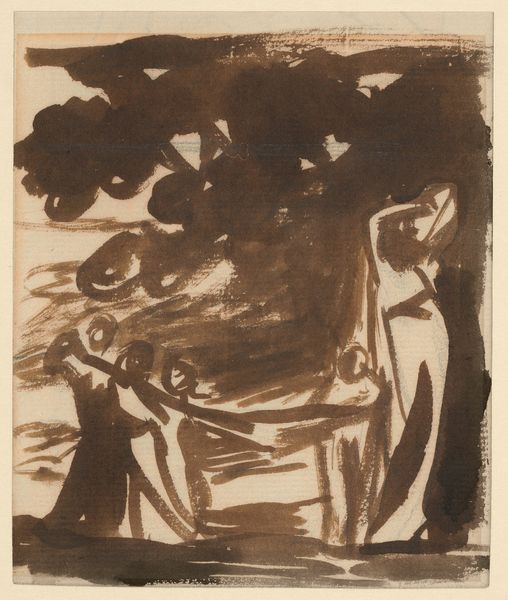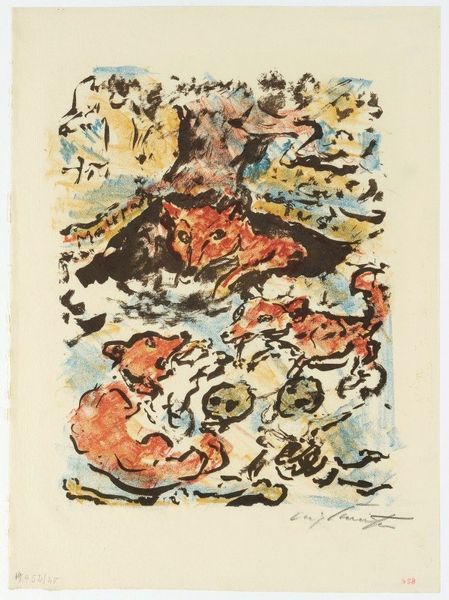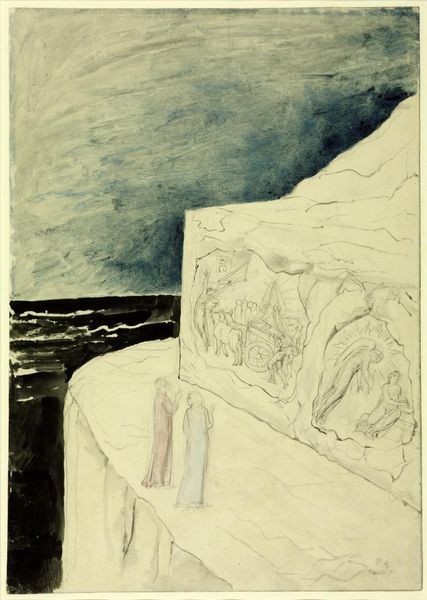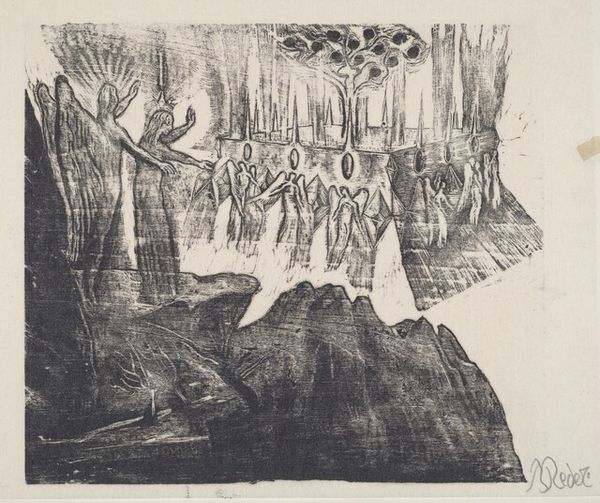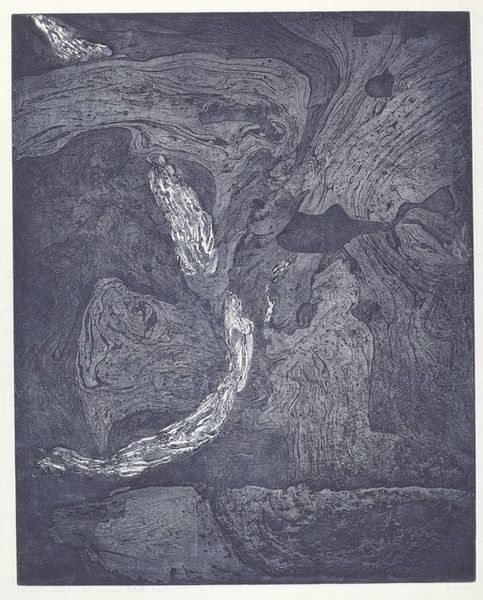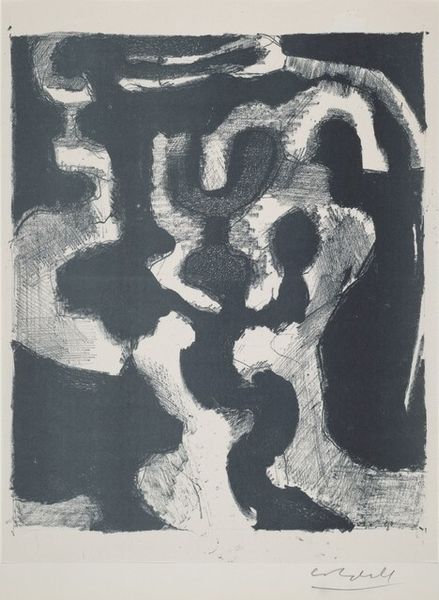
Copyright: Public domain Japan
Editor: Koshiro Onchi's 1948 watercolor and ink drawing, *Allegory: Ruins*, possesses a somewhat melancholic air. The composition is stark; it evokes a sense of desolation, yet also something surreal, maybe a kind of suspended dreamscape. What stands out to you as you consider its meaning? Curator: The image speaks of fragmented memories, wouldn't you agree? Onchi, a pivotal figure in Japanese modernist printmaking, experienced the war firsthand. The ruined buildings below are obvious symbols, but the floating figure above, is that a ghost, or perhaps hope, rendered in an unsettling green? Editor: It does feel unresolved, almost spectral. There’s a tension between the destruction below and that ambiguous figure floating above. I see the figure’s hair, as dark as the tree, seems to want to root itself in the lower landscape. Curator: Indeed. The imagery resonates with themes of cultural trauma and reconstruction. The artist may have seen the ruins not only as physical remnants, but also as a disruption in the Japanese psyche and continuity. Consider the cultural weight of the figure and its ambiguous symbolism, and we get to cultural memory and continuity within the work. How might post-war Japanese viewers respond to those juxtapositions, that dark against light? Editor: Perhaps with a mix of grief and cautious optimism, looking to a future shadowed by recent history. Curator: Precisely. These archetypes have resonated over time, influencing our interpretations of human vulnerability. Understanding symbols unlocks layers of cultural memory within us, doesn't it? Editor: Absolutely, looking at it again, it now communicates loss with a new kind of hope layered within. Curator: The picture’s haunting quality leaves us considering cultural reconstruction after devastation. The personal and communal narratives layered together.
Comments
No comments
Be the first to comment and join the conversation on the ultimate creative platform.
